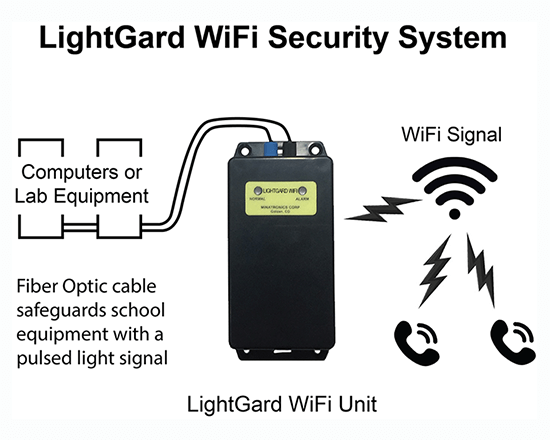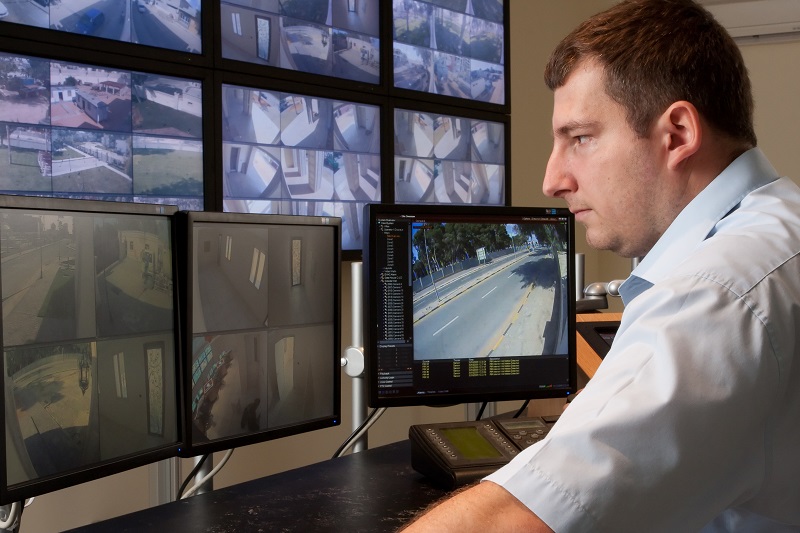Security Fibers: A Durable Solution for Advanced Security Systems
Security Fibers: A Durable Solution for Advanced Security Systems
Blog Article
Why Fiber Optic Safety And Security Equipments Are the Future of Security
The shift to fiber optic protection systems notes a considerable improvement in the world of defense, driven by their extraordinary information transmission capabilities and durability to exterior interferences. As the landscape of security evolves along with emerging technologies such as AI and IoT, the potential for fiber optics to enhance and redefine safety and security infrastructures ends up being increasingly noticeable.
Benefits of Fiber Optic Systems
Among the key benefits of fiber optic systems is their premium data transfer capacity, which facilitates the transmission of huge quantities of data over long ranges without considerable loss. This particular is especially valuable for safety applications that need the continual monitoring and transfer of high-definition video clip feeds, sensing unit data, and various other important information. Fiber optics can suit the growing demands of modern security systems, making sure that information continues to be undamaged and dependable.
Additionally, fiber optic wires are less susceptible to electromagnetic interference, which can be a significant issue in atmospheres with different digital tools. This resistance improves the integrity of the information being transferred, therefore minimizing the risk of data violations or system failures. Fiber optic systems are naturally much more safe than standard copper wires, as tapping into a fiber optic line without discovery is extremely difficult.
The toughness of fiber optic cables additionally contributes to their appeal. They are immune to ecological variables such as dampness and temperature variations, minimizing upkeep prices and increasing system durability. Overall, these benefits setting fiber optic systems as a durable and reliable choice for modern safety and security frameworks, making sure reliable and safe and secure information transmission.
Enhanced Information Transmission Rate

The ability to transmit vast amounts of data rapidly facilitates the seamless combination of high-def video feeds and advanced analytics. Safety and security systems can now refine and analyze details in real-time, enhancing action times and situational awareness. Furthermore, fiber optic links support longer transmission distances without deterioration of signal quality, making them optimal for extensive security networks.
The increased rate of fiber optic systems not only boosts the effectiveness of protection procedures but likewise lowers latency. This is particularly crucial in important scenarios where prompt decision-making can protect against protection breaches or reduce possible threats. As organizations remain to prioritize safety and security and effectiveness, the demand for rapid and reputable information transmission will undoubtedly strengthen fiber optic systems as a keystone of modern protection framework.
Resistance to Interference
Fiber optic safety and security systems constantly demonstrate extraordinary resistance to electromagnetic interference, a crucial advantage in environments vulnerable to digital noise. Unlike traditional copper cable televisions, which can be adversely impacted by magnetic fields, superhigh frequency interference, and other forms of electrical disruption, fiber optic cords make use of light to transfer information. This inherent home makes sure that the signals continue to be clear and unchanged, regardless of bordering electronic activity.
Using glass or plastic fibers in fiber optic modern technology develops an obstacle against interference, enabling reputable data transmission even in difficult situations such as industrial facilities, city locations with high electronic website traffic, or locations near radio towers. This characteristic considerably decreases the likelihood of signal deterioration or loss, making fiber optic systems especially appropriate for safety and security applications where honesty and precision of data are critical.
Moreover, this resistance to disturbance boosts the general efficiency and reliability of safety and security systems, ensuring that tracking and sharp systems operate seamlessly. In a world where security is increasingly threatened by sophisticated modern Source technologies, the resilience of fiber optic systems stands apart as a pivotal function, strengthening their status as an essential element of contemporary protection facilities.
Cost-Effectiveness With Time
Substantial price financial savings can be accomplished gradually with the application of fiber optic security systems. While the initial financial investment might appear greater contrasted to typical copper-based systems, the lasting financial advantages emerge via decreased operational and maintenance costs (fiber security). Fiber optic wires are naturally extra sturdy and much less vulnerable to environmental factors, which translates to lower substitute and repair service expenses over their life-span
In addition, fiber optic systems need much less power to operate, which even more lowers energy prices. Enhanced information transmission capabilities enable fewer repeaters and amplifiers, reducing equipment investment and streamlining setup processes. The scalability of these systems also adds to cost-effectiveness, as companies can increase their safety infrastructure without sustaining significant additional costs.
One more variable to take into consideration is the increased effectiveness in Go Here tracking and reaction abilities that optical fiber supply. Enhanced real-time data transmission can result in quicker event reaction times, potentially mitigating losses and obligations connected with security breaches. In amount, the lasting benefits of fiber optic security systems not just justify the initial expense however also position them as a monetarily sensible selection for organizations looking for robust security remedies.

Future Innovations in Safety
Advancing innovations are established to transform safety and security systems, integrating man-made knowledge (AI) and machine understanding to enhance hazard discovery and reaction capabilities. These innovations will permit safety and security systems to examine substantial amounts of information in real-time, recognizing patterns and anomalies that suggest prospective dangers. This aggressive method will make it possible for much faster decision-making and a lot more effective occurrence responses.
In addition, the consolidation of the Internet of Points (IoT) is leading the way for interconnected safety and security devices, using extensive monitoring and tracking. Smart sensors can relay details concerning environmental adjustments, while automated alerts can notify protection personnel instantly of dubious tasks.
Additionally, the advancement of biometric technologies will certainly even more bolster safety systems. Face recognition, fingerprint scanning, and retina recognition are coming to be more sophisticated, giving layers of authentication that are difficult to bypass.
Final Thought
To conclude, Extra resources fiber optic security systems stand for a considerable advancement in security technology, supplying unmatched information transmission rate, resistance to electro-magnetic interference, and long-term cost-effectiveness. As the demand for sophisticated security services continues to expand, the assimilation of fiber optics with arising innovations such as AI, IoT, and biometrics will certainly even more enhance security frameworks (fiber security). The mix of these advancements will make sure a more safe and responsive setting, solidifying fiber optics as a cornerstone of future safety and security systems
Report this page